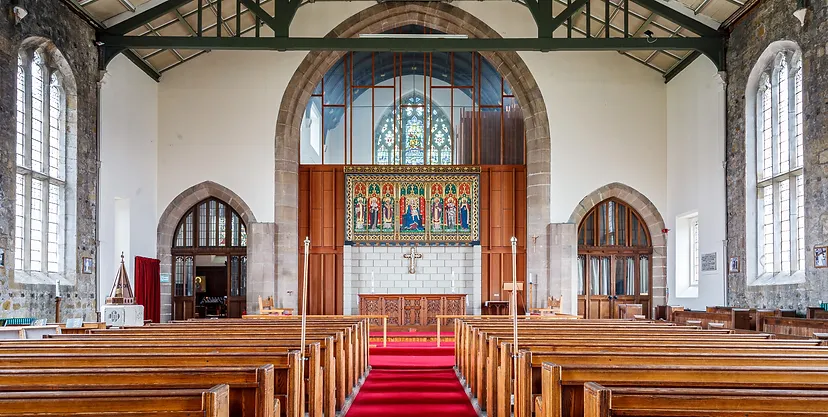
At the beginning of the 19th century, Redcar was a small fishing village of under 400 inhabitants. With the growing popularity of sea bathing and taking the sea air for health reasons, Redcar, along with a number of other seaside towns, began to expand quite rapidly, with its population more than doubling in the summer months. At this time, the local parish church was St Germain’s on the cliff top at Marske and hence worshippers were faced with a 3 mile walk along the sand dunes to go to church.
In 1818 a number of influential local people set up a subscription list, with the aim of providing a church within the growing town. This was followed by the donation of an area of land by Lord Dundas (later Earl of Zetland) and the preparation of the plans for the church by an eminent Durham architect, Ignatius Bonomi.
In 1823 approval for the new church was given and the foundation stone laid by Lady Teresa Turner of Kirkleatham. Stone for the building was given by Lord Dundas as well as a gift of money towards the costs.
The timbers required for the roof were too large to obtain locally and had to be imported into Hartlepool from the continent. In order to transport these, a flotilla of Redcar fishing boats set off to Hartlepool and towed the timbers back across Tees Bay, bringing them ashore on the beach near to the church.
Due to difficulties over fund raising, the building was not completed until 1829, when it was consecrated as a ‘Chapel of Ease’ of the parish of Marske, by the Archbishop of York.
The building is of local sandstone in the ‘perpendicular’ style and had cost £2 700. It provided seating for 700 worshippers in box pews, half of which were privately rented (many by local boarding houses for summer visitors) and the remainder free.
In 1835 Mrs Walton, a Redcar resident, presented the clock to the church. When it was installed, it was decided only to provide two faces, one to the north and one to the west, as there were only open fields to the south. The story says that the local farmers did not want a clock visible to the workmen in the fields as this would only encourage ‘clock-watching’. Hence to this day, the clock still only tells the time to the north and west.
By 1848 the church was found to be too small for all the worshippers and so it was extended by about one fifth, to approximately the position of the present wall behind the altar, providing about 50 additional seats and a larger chancel area.
In 1867 the importance of Redcar became recognised by the Church authorities, and St Peter’s was established as an independent Parish of Redcar, no longer a daughter church of Marske.
In 1872 the churchyard was closed for burials, as it was then full, and a new cemetery opened further along Redcar Lane, where it is still located. The gravestones in the churchyard remained in position until 1966 when most were removed, the churchyard grassed over and the perimeter wall reduced/removed.
In 1889 all of the old box pews were removed and the present pews installed. This marked the end of the practice of hiring your own pew and from then on, all seats were free.
In 1919, 100 years after the initial plans were drawn up for a church at Redcar, Lord Zetland offered £2 500 towards the cost of building a new church in place of the existing one. However, the high cost of both materials and labour precluded this at the time, and hence he was asked if the chancel could be enlarged as a first stage. This he agreed to, and eventually work began in 1926 on a new Lady Chapel, Chancel and children’s chapel.
The design of this extension was such that it made provision for the remainder of the church to be demolished and rebuilt at some time in the future. This was not to be and hence we have the building you see today, with the 1926 extension now housing the Lady Chapel in its original form, whilst the remainder was extensively remodelled in the late 1980’s to form the ‘Zetland’ rooms.